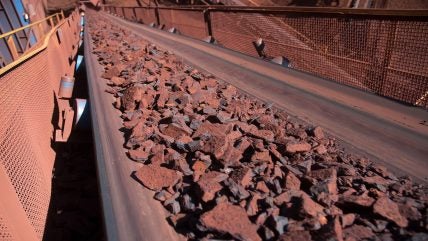
“Electric vehicles are toys for the rich.” That’s a common and decreasingly accurate dig at EVs, usually used by people who are far behind the times. Today, EVs are available at most price points (including used) where they make more financial sense. We’ve looked at the total cost of operation a number of times for different vehicles, and it becomes clear that after you factor in things like fuel, maintenance, and other factors that an EV often beats cheaper ICE vehicles.
But, people usually don’t run a TCO analysis when they’re buying a car. Why? Because buying a car is a very emotional decision. It’s a big part of your life, and at least some of your personal identity often ends up tied up in it. Some buy way more car than they need, and buy massively wasteful inefficient vehicles to impress people. Others want to project a professional but more middle-class appearance. Some people with big money buy cheap, older vehicles because they want to look thrifty and impress their responsible friends at church on Sunday. Many others are just tightwads or actually can’t afford anything but a rusting shitbox.
But there’s one class of car buyers that doesn’t think about impressing the neighbors or church ladies. When you’re running a business, it’s all about dollars and cents. If you spend too much making your business look cool, the business goes under. No amount of culture war, politics, and emotional personal preference can overcome the almighty dollar.
Or, in today’s case, fear of change and love of tradition failed to defeat the almighty euro.
DHL Express Ireland recently replaced 44 diesel-powered pick-up and delivery (PUD) vehicles with state-of-the-art electric vehicles (EVs) from Ford. The company says this transition is part of its commitment to a sustainable and environmentally conscious future, so there’s still some element of trying to impress people, but it wouldn’t have done this if it wasn’t good for the bottom line.
In preparation for the EV launch, DHL has successfully established EV charging infrastructure across all main service centers in Ireland. With an initial investment of €4.3 million, this initiative represents the first phase of a comprehensive EV rollout plan, with an additional €4 million planned for future investment. This includes not just the four main service centers, but also offering electric vehicle charging at 10% of the company’s parking spaces in Ireland, allowing for employees to have a much easier time making the move to electric, too.
“DHL Express Ireland is committed to a greener, ultimately emission-free future,” said Mike Farrell, National Operations Director at DHL Express Ireland. “Our decision to transition from diesel to electric vehicles underscores our dedication to sustainability and aligns with our broader DHL Group mission of achieving net zero emissions by 2050. As part of this journey, the DHL Group has committed to invest €7 billion through to 2030 in clean operations to reduce logistics-related greenhouse gas (GHG) emissions.”
The company mentioned two big advantages to swapping diesel out for electric.
For one, the widespread adoption of electric pickup and delivery vehicles in Ireland will have a profound impact on reducing CO2 emissions. By replacing traditional fuel-powered vehicles with electric alternatives, an estimated 229 tons of CO2 emissions can be eliminated annually. This not only contributes to Ireland’s sustainability efforts, but also helps combat climate change on a global scale. The shift towards electric vehicles represents a significant step forward in creating a cleaner and greener future for generations to come.
Furthermore, DHL Express Ireland is embarking on an ambitious endeavor to achieve a momentous milestone in sustainability. The company is committed to transitioning its entire leased commercial delivery fleet to electric vehicles, specifically targeting vehicles with a gross vehicle weight of 3.5 tons or less. This strategic move not only showcases DHL’s commitment to reducing carbon emissions but also demonstrates its dedication to environmental stewardship and shaping a greener future for the logistics industry. By embracing electric vehicles, DHL Express Ireland aims to set a new standard for eco-friendly transportation and pave the way for a more sustainable and cleaner delivery ecosystem.
Delivery Vehicles Are A Natural Fit For Going Electric
One thing that certainly couldn’t hurt is just how naturally delivery vehicles can switch to electric.
An example from “across the pond” can shed some light on this. The United States Postal Service has had a hell of a problem on its hands in recent years with its extremely aged fleet of Grumman LLV delivery vehicles. These gas-powered Grummans, now decades old and long past their service life, were great for the time in which they were bought, but today they’re delivering extremely poor fuel efficiency and are even catching fire.
The biggest reason USPS is getting extremely poor mileage is that you get exactly zero MPG when you’re sitting there with the vehicle idling and not moving. Delivery vehicles need to travel at relatively low speeds, often in stop-and-go traffic, between delivery stops. When they get to a delivery stop, they sit for minutes at a time doing nothing but burning fuel.
Worse, old vehicles can often overheat and suffer other mechanical breakdowns while idling unattended during these stops, so dangerous fires have become a big problem.
EVs, on the other hand, are perfectly at home with that kind of drive cycle. Low speeds are where they are at their most efficient, and stop-and-go conditions allow for lots of efficient regenerative braking. When stopped, an electric motor doesn’t need to use any electricity to idle, so the only energy used is a tiny amount for power electronics and maybe heating or air conditioning.
In other words, for the kind of driving DHL is doing (and every other delivery or parcel service), EVs have the homefield advantage while gas and diesel are now the poorest of tools available for the job.
So, while DHL is telling us a lot about sustainability, the real advantage for the company is that it’s going to save a ton (metric or otherwise) of money on fuel, maintenance, and vehicle problems. As usual, dollars (or euros) and sense carry the day!
Featured image provided by DHL Ireland.
I don’t like paywalls. You don’t like paywalls. Who likes paywalls? Here at CleanTechnica, we implemented a limited paywall for a while, but it always felt wrong — and it was always tough to decide what we should put behind there. In theory, your most exclusive and best content goes behind a paywall. But then fewer people read it! We just don’t like paywalls, and so we’ve decided to ditch ours. Unfortunately, the media business is still a tough, cut-throat business with tiny margins. It’s a never-ending Olympic challenge to stay above water or even perhaps — gasp — grow. So …




